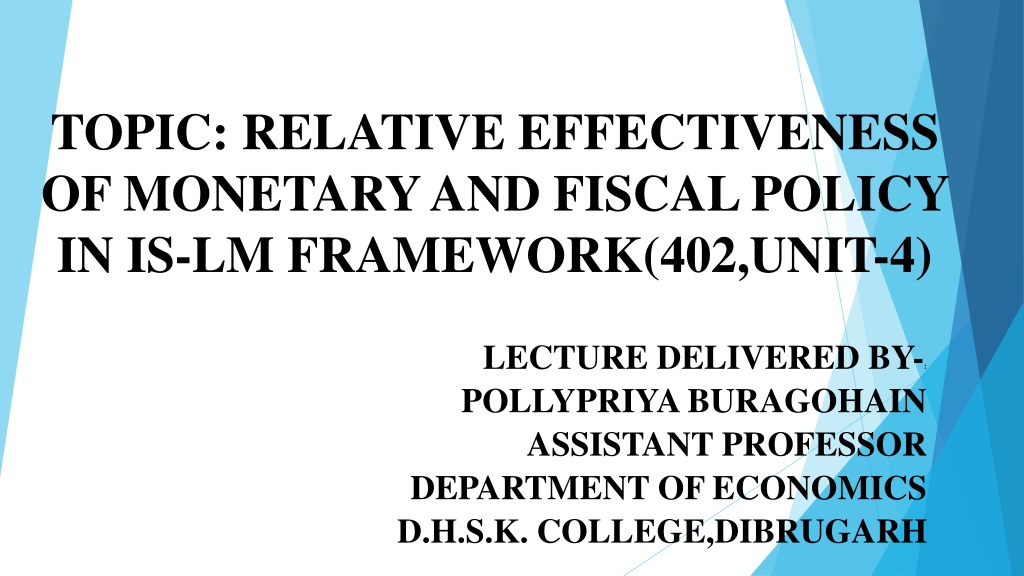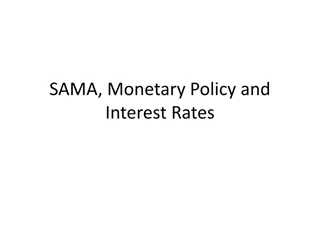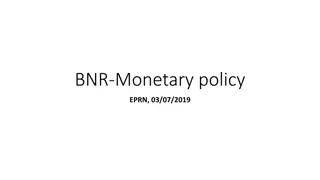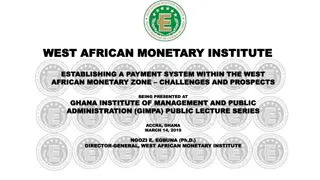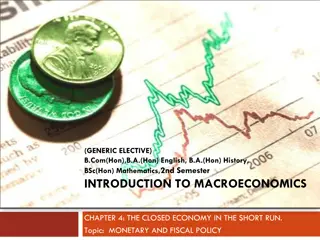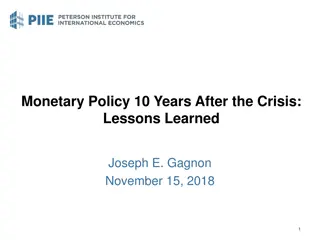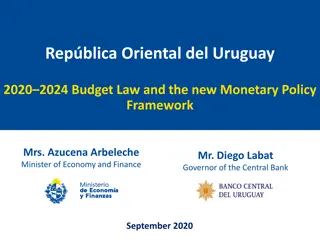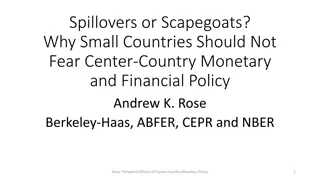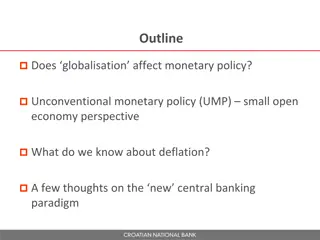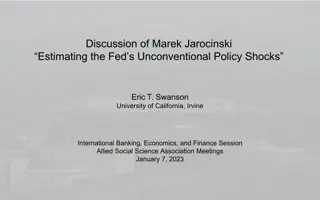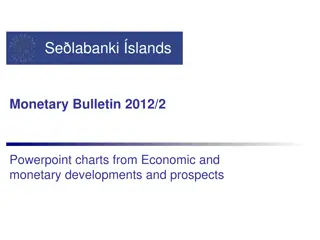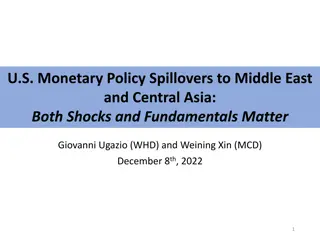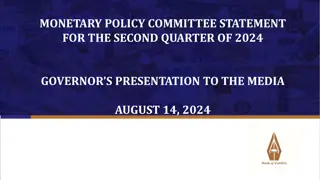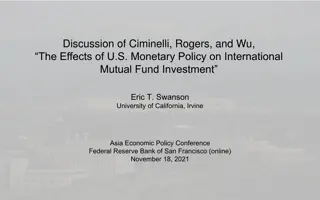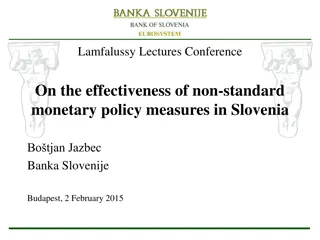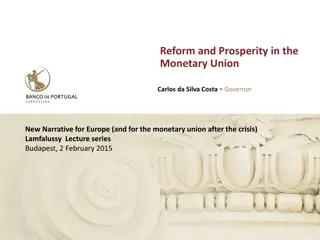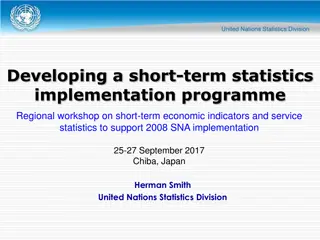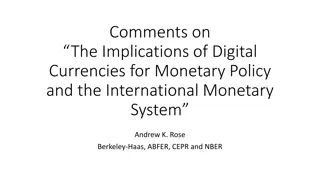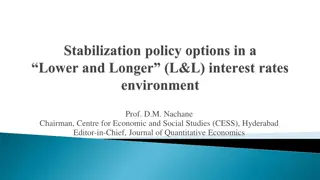Understanding Monetary Policy Effectiveness in the IS-LM Framework
The relative effectiveness of monetary policy in influencing investment, employment, output, and income depends on the shape of the LM curve and the IS curve. A steeper LM curve signifies higher effectiveness as it indicates less interest elastic demand for money, resulting in significant changes in interest rates and subsequently in investment and national income. Conversely, a flatter LM curve implies lower effectiveness due to more interest elastic demand for money. The impact varies from complete ineffectiveness in a liquidity trap scenario with a horizontal LM curve to high effectiveness with a vertical LM curve where money demand is perfectly interest inelastic.
Download Presentation

Please find below an Image/Link to download the presentation.
The content on the website is provided AS IS for your information and personal use only. It may not be sold, licensed, or shared on other websites without obtaining consent from the author. Download presentation by click this link. If you encounter any issues during the download, it is possible that the publisher has removed the file from their server.
E N D
Presentation Transcript
TOPIC: RELATIVE EFFECTIVENESS OF MONETARY AND FISCAL POLICY IN IS-LM FRAMEWORK(402,UNIT-4) LECTURE DELIVERED BY-: POLLYPRIYA BURAGOHAIN ASSISTANT PROFESSOR DEPARTMENT OF ECONOMICS D.H.S.K. COLLEGE,DIBRUGARH
SUB TOPICS: 1. Monetary Policy 2. Fiscal Policy 3. The Synthesist View: Three Range Analysis 3(a). Monetary Policy 3(b). Fiscal Policy 4. Monetary-Fiscal Mix
1. Monetary Policy The government influences investment, employment, output and income through monetary policy. This is done by increasing or decreasing the money supply by the monetary authority. When the money supply is increased, it is an expansionary monetary policy. This is shown by shifting the LM curve to the right. When the money supply is decreased, it is a contractionary monetary policy. This is shown by shifting the LM curve to the left.
But the relative effectiveness of monetary policy depends on the shape of the LM curve and the IS curve. Monetary policy is more effective if the LM curve is steeper. A steeper LM curve means that the demand for money is less interest elastic. The less interest elastic is the demand for money, the larger is the fall in interest rate when the money supply is increased.
This is because when the demand for money is less elastic to a change in interest rate, an increase in the money supply is more powerful in the bringing about a large fall in interest rate. A large fall in the interest rate leads to a higher increase in investment and in national income. On the other hand, the flatter is the LM curve, the less effective is monetary policy. A flatter LM curve means that the demand for money is more interest elastic. The more interest elastic is the demand for money, the smaller is the fall in interest rate when the money supply is increased. A small fall in the interest rate leads to a smaller increase in investment and income.
If the LM curve is horizontal, monetary policy is completely ineffective because the demand for money is perfectly interest elastic. This is the case of liquidity trap . On the other hand, if the LM curve is vertical, monetary policy is highly effective because the demand for money is perfectly interest inelastic.
Slope of the IS curve The flatter is the IS curve, the more effective is the monetary policy. The flatter IS curve means that the investment expenditure is highly interest elastic. When an increase in the money supply lowers the interest rate even slightly, private investment also increases, by a large amount, thereby raising income much.
If the IS curve is vertical monetary policy is completely ineffective because investment expenditure is completely interest inelastic. On the other hand, if the IS curve is horizontal, monetary policy is highly effective because investment expenditure is perfectly interest elastic
2. Fiscal Policy The government also influences investment, employment, output and income in the economy through fiscal policy. For an expansionary fiscal policy, the government increases its expenditure or/and reduces taxes. This shifts the IS curve to the right. The government follows a contractionary fiscal policy by reducing its expenditure or/and increasing taxes. This shifts the IS curve to the left. The increase in the interest rate tends to reduce private investment expenditure at the same time when the government expenditure is being increased.
The relative effectiveness of fiscal policy depends on the slope of the LM curve and the IS curve. Fiscal policy is more effective, the flatter is the LM curve, and is less effective when the LM curve is steeper. When the IS curve shifts upwards to IS1with the increase in gov- ernment expenditure, its impact on the national income is more with the flatter LM curve than with the steeper LM curve.
Fiscal policy is completely ineffective, if the LM curve is vertical. It means that the demand for money is perfectly interest inelastic.
Slope of the IS curve The steeper is the IS curve, the more effective is fiscal policy. The flatter is the IS curve, the less effective is fiscal policy.
Fiscal policy is completely ineffective, if the IS curve is horizontal. An horizontal IS curve means that investment expenditure is perfectly interest elastic
On the other extreme is the vertical IS curve which makes fiscal policy highly effective. This is because government expenditure perfectly interest inelastic.
